A guide to what to see and do at the Tokyo Imperial Palace. History, architecture, a museum, music and spectacular gardens.
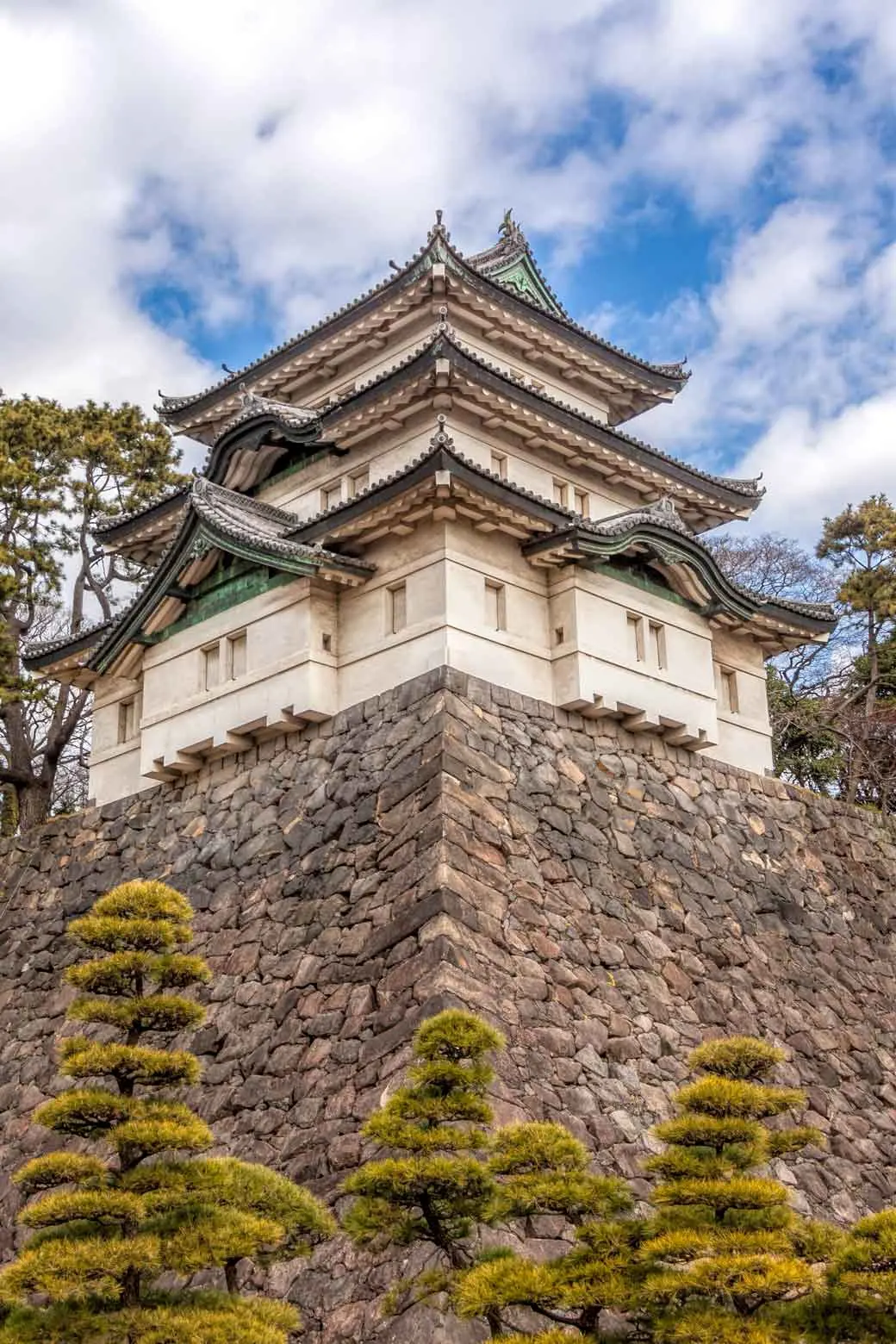
The Tokyo Imperial Palace is a site most will enjoy visiting while in the city. It’s situated right in the heart of Tokyo on 3.41 km2 of grounds. That’s a huge space in a city with some of the world’s most expensive real estate. To break it down and make it easier to plan your visit the site can be divided into four main parts:
- The Imperial Palace to the west
- The Kitanomaru Garden to the north
- The Kōkyo Higashi Gyoen also called East Gardens, are in the east as you might expect, and
- Kokyogaien National Garden is at the southern end.
Table of Contents
- Reasons to visit the Tokyo Imperial Palace
- 1. Edo Castle – The history of the Tokyo Imperial Palace
- 2. A tour of the inner section of the Tokyo Imperial Palace
- 3. Imperial Palace East Gardens (Kōkyo Higashi Gyoen)
- 4. Otemon Gate
- 5. Museum of the Imperial Collection (Sannomaru Shozokan)
- 6. Nijubashi Bridge
- 7. Kokyo Gaien
- 8. Special Openings and Events
- 9. Tokagakudo music hall
- 10. Kusunoki Masashige Statue
- Getting to the Tokyo Imperial Palace
Reasons to visit the Tokyo Imperial Palace
I’ve read a few discussions on Tokyo where people have suggested you can skip the Imperial Palace and that “it’s just a park and a few stone walls”. I understand that people visit Tokyo for many reasons, where it’s electronics shopping, food and the modern aspects of the city that hold an appeal for you, you may choose not to visit the palace.
I believe it has a lot to offer anyone with an interest in history, culture and nature, or a desire to experience the contrasts Tokyo is so famous for. If you’re undecided here are 10 reasons to visit and things to do at Tokyo Imperial Palace to help you decide whether it makes it onto your itinerary.
1. Edo Castle – The history of the Tokyo Imperial Palace
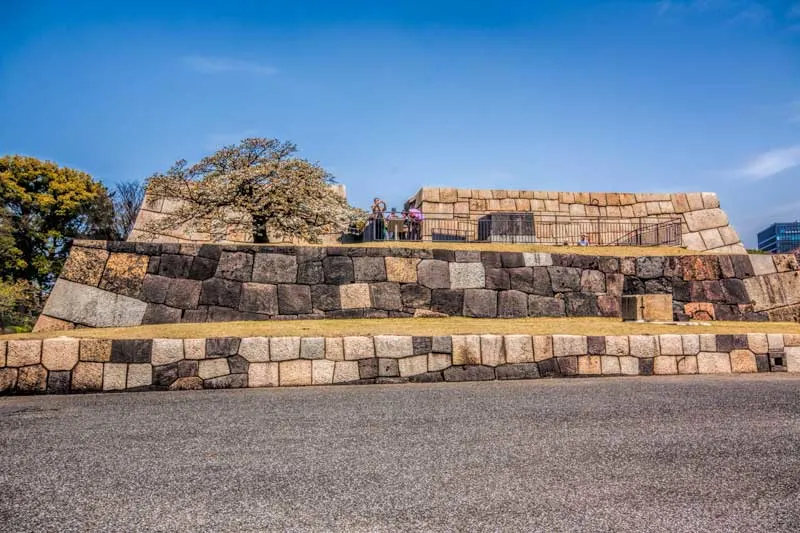
The history of Japan being reigned over by an Emperor is extensive and fascinating dating back to 660 BC. The Tokyo Imperial Palace is located on the site of the original Edo Castle which was established during the Meiji period. In 1868 the capital moved from Kyoto (previously known as Heian) to Tokyo (Edo) and was established from this exact spot.
None of the original Edo castle buildings remain today although there are original moats, walls, watchtowers and entrance gates. In the East Gardens, you’ll also see the foundations of the former castle tower built in 1638. At the time it was the tallest castle tower built in Japan, unfortunately it was destroyed by fires that raged through the city less than 20 years later and it was never rebuilt.
2. A tour of the inner section of the Tokyo Imperial Palace
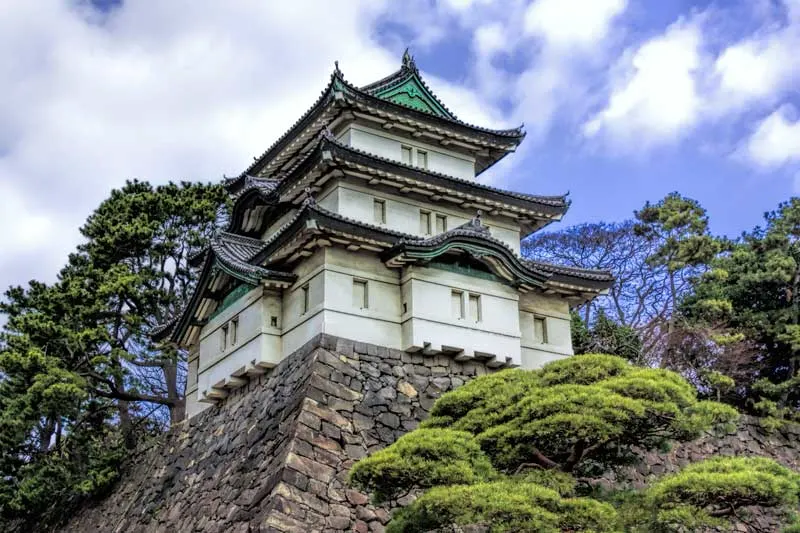
As I mentioned above the grounds can be roughly divided into 4 quadrants, to the west is the Imperial Palace itself. This includes the inner palace grounds and official residences which are generally closed to the public except for a couple of special openings each year. It’s the home of Emperor Akihito and his family, Japan’s 125th Emperor and the 4th to rule from this site in Tokyo.
About a third of the Imperial Palace section is open to the public to visit on an organised tour. If you want to see behind the scenes you can organise this through the Imperial Household Agency. You can either pre-book it through the website in advance or you can arrive a little early on the day and join a tour as long as it’s not fully booked.
That’s what we did and we had no issue at all getting on the next session. Tours take around 90 minutes and are free to join. You must stay with the group and you only view the exterior of the buildings. The tour is in Japanese but there’s a device for English translation.
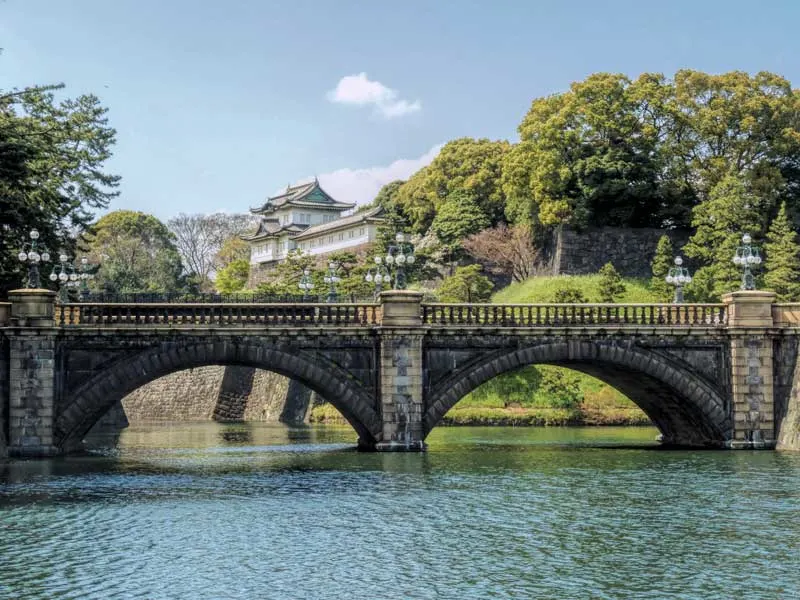
The buildings you see in this section are all post-WWII era. The information and history are interesting but personally, if time was limited I might skip this tour with the benefit of hindsight. It’s a very different experience to visit the inner grounds of the Kyoto Imperial Palace which I would highly recommend to anyone for its impressive traditional architecture, history and garden design.
Kyoto’s Imperial Palace has avoided the perils of war and fire and has been lovingly maintained and restored in recognition of it having been home to Japanese Emperors for 1000 years.
3. Imperial Palace East Gardens (Kōkyo Higashi Gyoen)
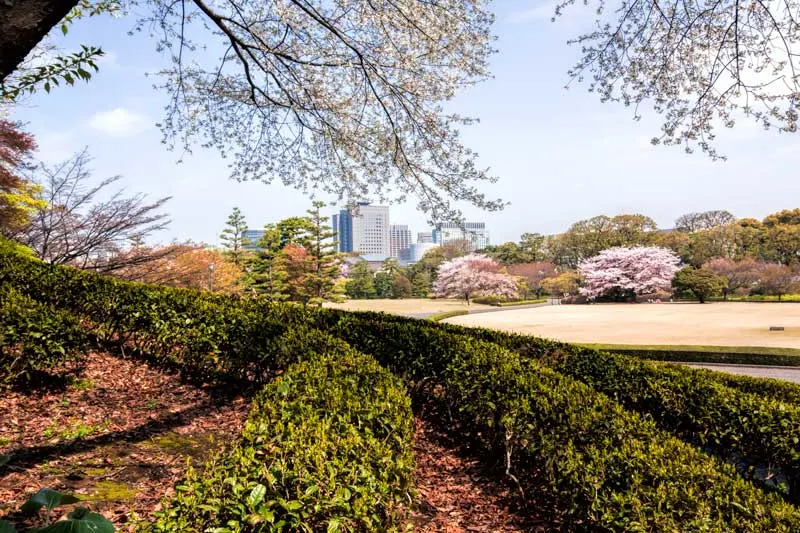
The next quadrant on the eastern side of the site is the Imperial Palace east gardens. This section of the grounds is dedicated to parks and gardens that are open to the public and possibly the best known of the sections for visitors. Like Meiji Shrine that I have written about previously, this massive expanse of green in the centre of such a densely populated city is a fabulous place to escape for a while and see the city and its citizens from another perspective.
During the time of Edo castle, this was the innermost circle of defence known as the Honmaru and the secondary circle known as the Ninumaru. If you’re headed to the Imperial Palace East Gardens from the city you’ll want the Otemon gate entrance.
Entry is free and the gardens are open from 9 am until 4 pm (sometimes until 5 pm depending on the season). Watch out for the closed days being Mondays and Fridays unless it’s a special holiday opening.
4. Otemon Gate
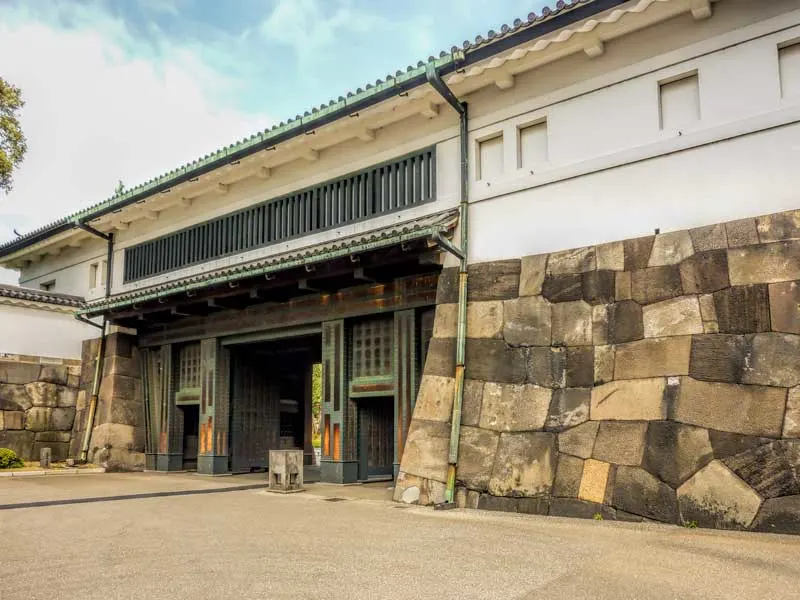
This gate is the entryway to what is now the East Gardens and what would have been the secondary defensive circle of the castle. The ‘gate’ is the watari-yagura, a building that was used for storage and defence. What we see here today was re-constructed in 1968, the original having been destroyed in April 1945 during WWII. To stand beneath its scale is very impressive, those doors and slabs of stone are massive.
A relic that was able to be rescued was the copper stylised fish that was a roof finial on the original gate. A date carved into the statue suggests it dates back to 1657.
5. Museum of the Imperial Collection (Sannomaru Shozokan)
Through the Otemon Gate, you will find the Museum of the Imperial Collection. The museum was established in 1993 to provide public access to the collection of 6000 pieces that were donated to the Japan Government in 1989 from the Imperial Collection with the passing of Emperor Showa. The collection available for display in the museum has since extended to around 9500 pieces with the addition of collections from the late Empress Kojun, the late Princess Chichibu and the late Princess Takamatsu.
The treasures on display include a wide variety of arts and crafts from the Imperial collections, many are exceptionally old and rare pieces. It includes calligraphy by Wang Xizhi (303 – 361) a writer from the Jin dynasty widely considered to be the world’s most esteemed calligrapher.
Opening days and hours vary depending on the season and special events. In general, the museum is open daily from 9 am until around 4 pm and entry is Y1000 which must be booked online in advance.
If planning a visit during 2023 and 2024 be aware that there is a maintenance programme underway. You can see any closures or changes to opening days, or book tickets on the official museum site.
6. Nijubashi Bridge

This is the formal entrance to the Imperial Palace and is only opened for important State events. The ‘double bridge’ as it is known is the most famous of Tokyo’s many bridges and is heavily photographed. There are actually 2 bridges, one behind the other but the stone bridge in the foreground with its elegant double arches is definitely the more attractive. Supposedly at the correct angle, they look like a single bridge but it seems to also depend on your height. At 5’2″ it permanently looked like one bridge from the city side to me, you can see what I saw in the photo at the top of the page.
It wasn’t until we did a palace tour several years later and viewed the stone bridge from the iron bridge behind it that I even knew it was there.
7. Kokyo Gaien
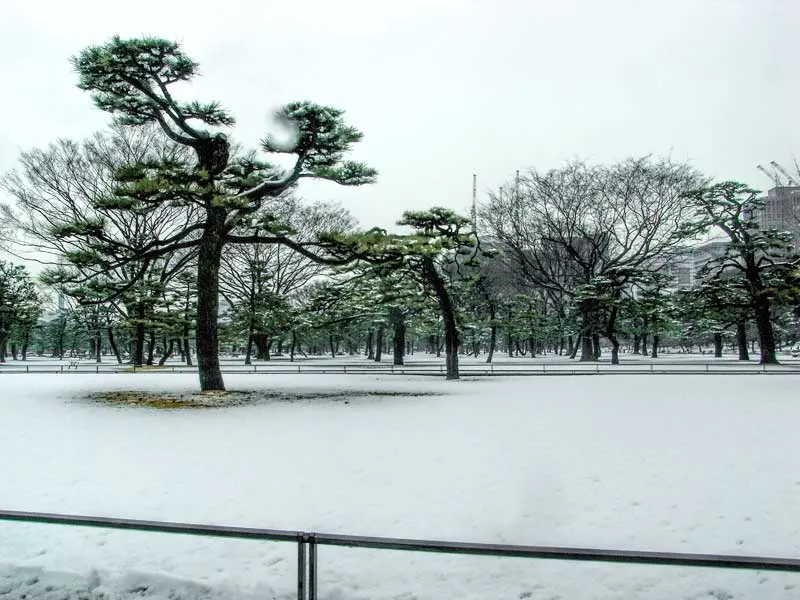
Another of the quadrants, to the south this time, is the Kokyogaien National Garden. This is a really rare view of the Kokyo Gaien with a covering of fresh snow overnight. We were in a taxi early in the morning on the way to JR station and I only just managed to wrestle my camera from my bag in time for the one shot after staring in disbelief at the beauty of it and the frustration that I didn’t have time to wander through the park and enjoy it fully.
From the Kokyogaien you’ll get some of the best views of the remnants of historical architecture remaining from the time of Edo Castle. These include some original structures including the moat, stone walls, guard towers and gates.
8. Special Openings and Events
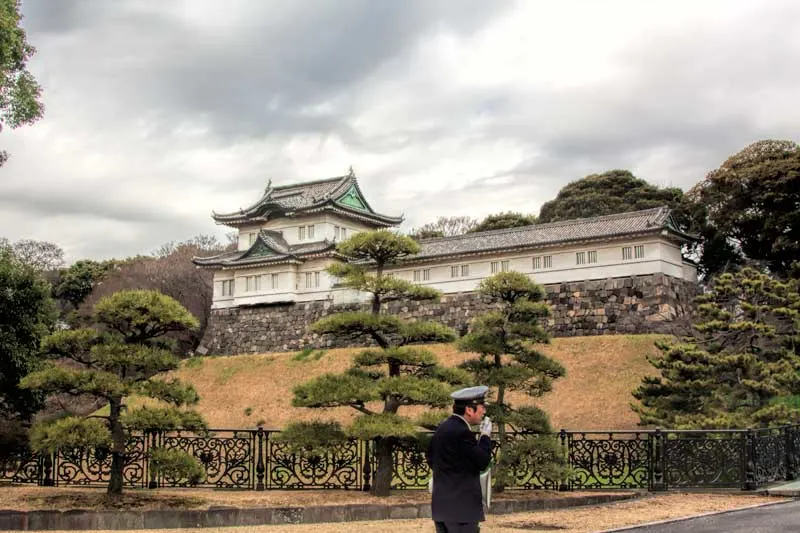
There are only 2 special openings I am aware of when the public may enter the inner Imperial Palace Grounds and have the opportunity to sight the Imperial family.
On New Year’s Day, the 1st of January the Emperor and Imperial family will make appearances on the balcony 5 times during the day. To attend the event you should arrive at the Main Gate (Nijubashi) between 9.30 am and 2.10 pm. You must not bring any large items, selfie poles, large bags etc and it is very structured. Be prepared for your bag to be checked and to form up into rows with everyone moving into position in a structured way.
The process is quite similar to the 23rd of December for the Emperor’s birthday. Entry for this event is also via the Nijubashi gate between 9.30 am and 11.20 am and there will be 3 appearances by the Imperial family. During this event, you also have the opportunity to add your name and details to the greetings book.
9. Tokagakudo music hall
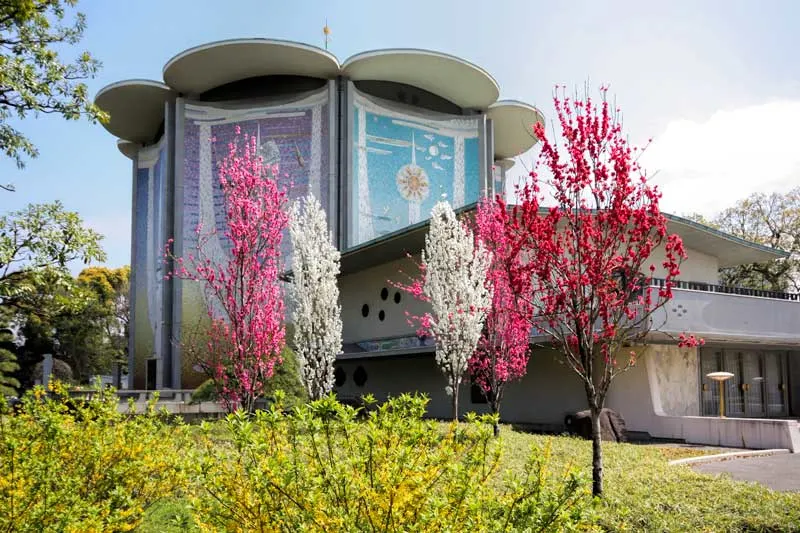
Located in the East Gardens of the Tokyo Imperial Palace is the Tokagakudo Music Hall. It’s an unusual looking building constructed in 1966 to celebrate the 60th birthday of the late Empress Kojun who loved classical music. Designed by architect Kenji Imai, the building is octagonal in shape with the outer walls decorated in ceramic tiles and pieces of pottery. The roof is supposed to represent a clematis flower. It’s one of Tokyo’s more distinctive pieces of modern architecture.
10. Kusunoki Masashige Statue
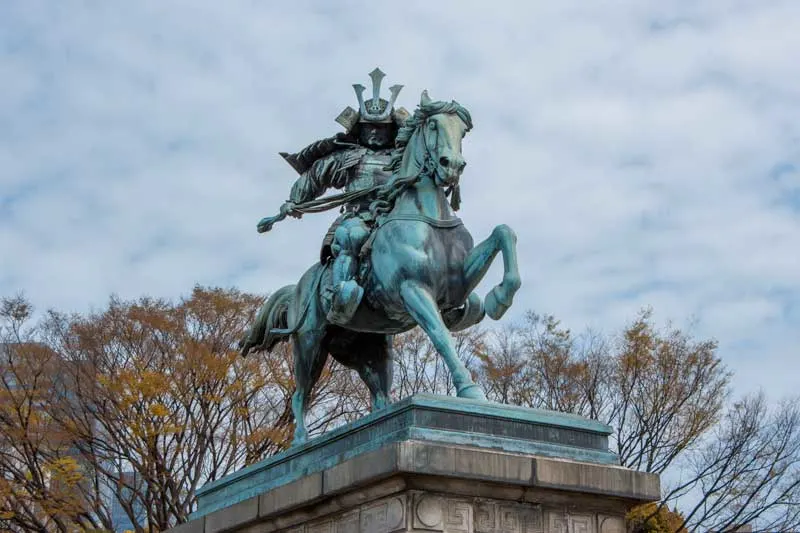
Finally, as a link back to the feudal age and the times of Edo Castle keep a look out for the statue of Kusunoki Masashige (1294-1336). Masashige was a Samurai warrior in the 14th century who fought for Emperor Go-Daigo in the Genko War. He is said to have been a brilliant tactician and strategist and his loyalty was recognised with the highest honours of the Meiji government in the 1800s and with this statue that stands in central Tokyo today.
Getting to the Tokyo Imperial Palace
With such a large footprint there are several entrances to the Imperial Palace grounds depending on where you are coming from and whether there are particular sections you want to visit. If you aren’t staying somewhere adjacent the easiest access location is to arrive on the subway to Otemachi Station which is only a few minutes walk to the gardens, it’s an intersect station so you can get here on any of the Chiyoda, Tozai, Marunouchi, Hanzomon or Mita Subway Lines. Alternatively, it’s an easy walk and around 15 minutes from Tokyo Station.
If you found this article helpful please consider saving on Pinterest or sharing on social media.
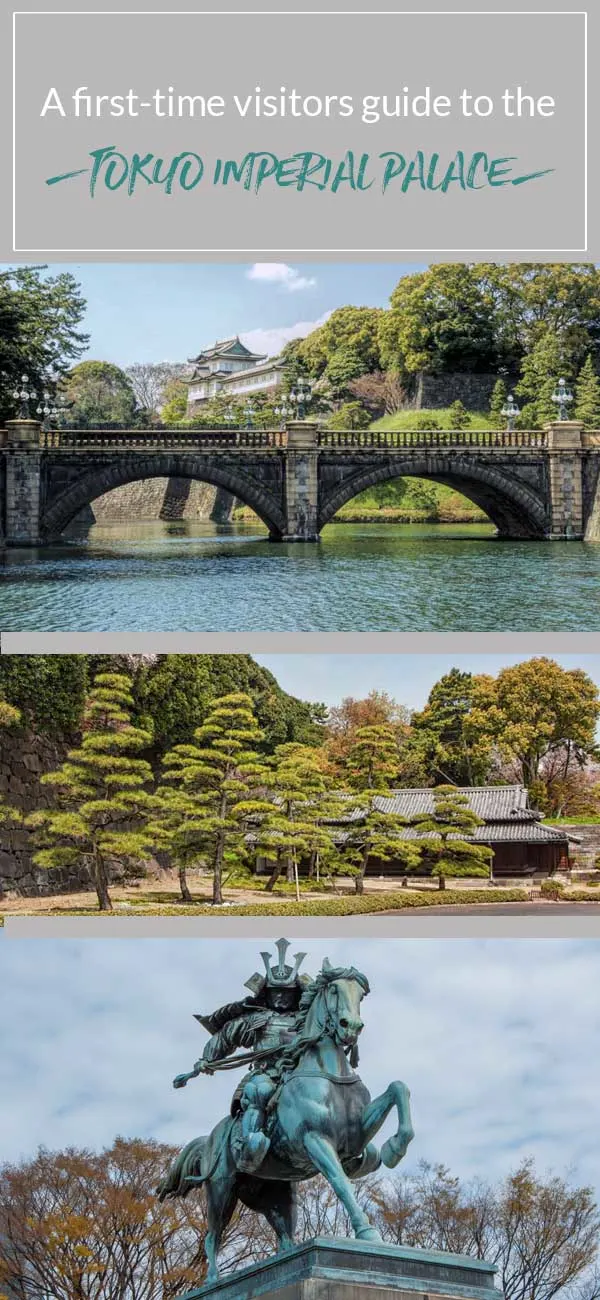
Barbara
Saturday 7th of July 2018
Thanks for your helpful site. My friend and I are going to Japan (Tokyo) for 8 days in September; we are 70 year olds from Perth. We hope to do some of your suggestions including The Imperial Palace. We don’t want to book in advance in case we change our minds when we get there. Our friends say we should book everything in advance AAC we will not get tickets on the day. What are your thoughts.
We are going beyond Tokyo for another 2 weeks: and we will be purchasing JR pass before we go but have taken your advice and will activate it from the day we leave Tokyo. Thanks
Toni Broome
Sunday 8th of July 2018
Hi Barbara, September isn't an overly busy time for visitors in Tokyo so we would turn up for an on-the-day booking. I find something like that too restrictive to book ahead in case you see something else you would rather do that won't work with the timing of the tour, or want to switch it from morning to afternoon. Of course if you are going to be really upset if you don't get on it then book but if you can go with the flow of the day then I'd stay flexible.
Jennifer
Thursday 24th of August 2017
I think I'd definitely plan my trip around when I could enter the Imperial Palace grounds. The pagoda residence is the most beautiful part, I think. It'd be a shame to miss seeing it!
Jennifer Melroy
Thursday 24th of August 2017
So much green. I would love to spend a couple of days exploring the grounds of the imperial palace. Add in the history of the area and I am set.
Megan Jerrard
Wednesday 23rd of August 2017
I would love to visit the Imperial Palace - sounds like it's quite a vast space in terms of attractions that would interest a traveler. A really fascinating insight into history, it's a shame that people advise to skip it. I love your photo of snow covering Kokyogaien National Garden - I imagine during the cherry blossoms, the gardens at the Imperial Palace would be incredible to walk through.
I would love to take a tour of the inner section of the palace, and thanks for the heads up on the two special openings on New Years and the Emperors birthday :)
Jessica
Wednesday 23rd of August 2017
Tokyo is such an amazing city! I loved every minute of it, the imperial gardens are beautiful, thanks for such a detailed guide, wish I would've had that when I went! Would love to go back for New Year's.